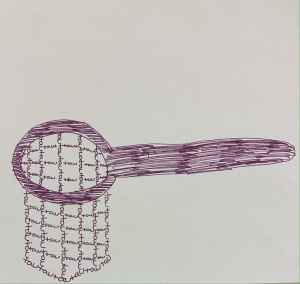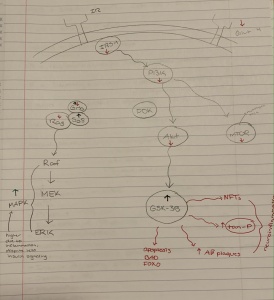Dancing Against Alzheimer’s Disease
My favorite video on the internet is of an elderly woman, who once was a ballerina, doing the upper body movements for one of the pieces she performed in the Swan Lake ballet. As a former ballet dancer myself, I enjoy hearing the music and watching others dance to it. Now, I don’t just love this video because it is ballet, but I love this video because the woman dancing has Alzheimer’s Disease. If you want to watch the video, which I totally recommend you do, the video is linked here.
Basics of Alzheimer’s Disease
In case you are unfamiliar with Alzheimer’s Disease, I will provide a brief crash course. There will be a quiz at the end of it, so make sure you’re paying attention. Just kidding. Alzheimer’s Disease is progressive disorder that leads to severe memory loss. Alzheimer’s Disease is biologically characterized by the death of neurons (brain cells) and abnormally decreased brain mass. The death of neurons tends to be linked to two things: amyloid plaques and neurofibrillary tangles. These words sound a little scary, but I will try to help them make sense.
Amyloid Plaques
Amyloid plaques are formed from beta-amyloid proteins, which are naturally occurring in the brain. These proteins, in an Alzheimer’s Disease brain, clump together and form a large mass between neurons multiple neurons.[1] With the beta-amyloid mass impeding on cell function and communication, the neurons begin to die.[2]
Neurofibrillary Tangles

Neurofibrillary tangles are similar to amyloid plaques in that they both are an abnormal accumulation of protein. Where amyloid plaques are caused by the accumulation of beta-amyloid proteins, the neurofibrillary tangles are caused by an accumulation of proteins called “tau.” It helps to think of neurofibrillary tangles like nets made out of tau, as pictured below. The tau proteins, which are found inside of the neuron, stick to each other to block the transport of nutrients from the neuron cell body to the other side of the cell.[3] So, I know that was a lot of information thrown at you but, to sum it up, amyloid plaques and neurofibrillary tangles are both present in Alzheimer’s brain and are both a build-up of proteins outside of the cell (plaques) and inside of the cell (tangles).
What Causes Alzheimer’s Disease?

Now, you may be asking yourself, “What causes Alzheimer’s Disease?” You pose an excellent question, and this is something I wondered as well. Researchers don’t know for sure what causes the buildup of these proteins, but many of them speculate it is a result of improper intracellular communication in the insulin signaling pathway. Again, I know this may not be a familiar topic, but I will try to explain it the best I can. To do this, I think it helps to have an image. The image below gives a brief rundown of the insulin signaling pathway and what changes are seen in brains with Alzheimer’s Disease, and I will talk you through what is going on in the image.
Insulin Signaling Pathway and Why it Relates to Alzheimer’s Disease
Usually, a hormone called insulin binds to a receptor in the brain, which is portrayed by the field goal post at the top of the image. The hormone binding to its receptor then triggers an intracellular communication pathway that starts with a protein called the insulin receptor substrate (IRS). Activation of this protein leads to activation of an enzyme with the acronym PI3K, which then signals activation of two different molecules: an enzyme referred to as Akt and a protein called mTOR. When Akt is activated, it inhibits glycogen synthase kinase (GSK-3B—another enzyme). In Alzheimer’s Disease, however, this entire pathway is abnormal. Firstly, there is less insulin binding to the receptor in brains with Alzheimer’s Disease due to something called insulin resistance. Because less insulin is binding to the receptor, there is less activation of IRS, which creates a snowball effect that leads to less activation of PI3K, then decreased activation of mTOR and Akt. Because there is less activation of Akt, GSK-3B is not inhibited as much as it should be. It is at this point where the two protein build-ups that I discussed previously can be explained. Therefore, because GSK-3B is not inhibited, activity is increased and leads to the formation of neurofibrillary tangles and amyloid plaques as a result of neuroinflammation. This is a very simplistic explanation but following along with Fig. 2 is helpful in wrapping your mind around what is happening.
[1] https://www.nia.nih.gov/health/what-happens-brain-alzheimers-disease
[2] https://www.nia.nih.gov/health/what-happens-brain-alzheimers-disease
[3] https://www.nia.nih.gov/health/what-happens-brain-alzheimers-disease